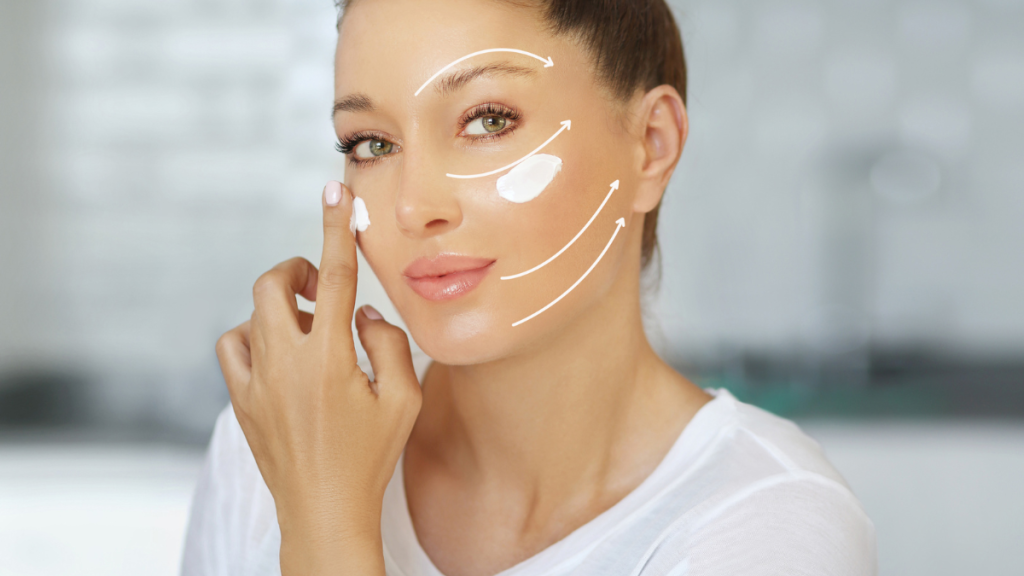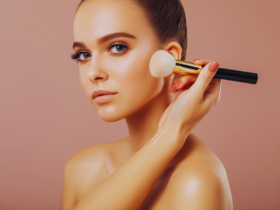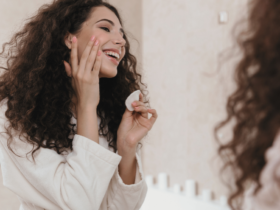Hello, skincare enthusiasts! Are you constantly battling with shiny skin and looking for a superhero ingredient to save the day? Well, guess what? Niacinamide might just be the cape-wearing, oily-skin-fighting ally you’ve been searching for! Let’s face it, managing oily skin can feel like a never-ending game of whack-a-mole. Just when you think you’ve got it under control, up pops that unwelcome shine. But fear not, my friends, because niacinamide is here to turn the tide in your favor. So, grab your favorite snack, settle in, and let’s chat about why niacinamide could be the game-changer your skincare routine desperately needs. Spoiler alert: you’re going to love this! 🌟🌿
What is Niacinamide?
Before we get into the nitty-gritty, let’s understand what niacinamide is. It’s a form of vitamin B3 that works wonders for the skin, especially when it comes to managing oiliness and achieving that elusive balance. It’s like that reliable friend who’s always there to help you out, no matter what!

Does Niacinamide Help with Oily Skin? Let’s Break it Down
The answer is a resounding yes! Niacinamide is a bit of a multitasker. Here’s how it helps:
1. Balancing Act: Sebum Control
Niacinamide is known for its ability to regulate sebum production. Sebum, though vital for skin health, can be a bit of an overachiever in oily skin. Niacinamide steps in to tell your skin, “Hey, let’s keep this oil production in check.” The result? Less greasiness, fewer “why is my face so shiny?” moments, and a more balanced complexion.
2. Pore-fection: Minimizing Appearance
Enlarged pores often accompany oily skin, like an unwelcome plus one. Niacinamide, with its pore-minimizing superpowers, can help reduce their appearance. It’s like giving your pores a gentle yet effective, nudge to be less noticeable.
3. Calm and Collected: Soothing Skin
Oily skin can sometimes be a bit temperamental, prone to redness and irritation. Niacinamide, in its calming glory, can help soothe and settle the skin. It’s like a peace treaty for your face, promoting harmony and reducing the look of redness.
4. The Barrier Booster
This wonder ingredient also plays a crucial role in strengthening the skin’s barrier. A healthy barrier is like a good bouncer, keeping irritants out and hydration in. For oily skin, this means better moisture balance, which can paradoxically reduce oiliness.
Incorporating Niacinamide into Your Routine

Ready to give niacinamide a whirl? Here’s the good news: it plays well with others and is easy to incorporate into your skincare routine. You can find it in various forms – serums, moisturizers, and even toners with concentrations between 2% to 10%. Start with a lower concentration if you’re new to it, and listen to your skin. It’s all about finding that sweet spot where your skin says, “Yes, this is just right!”
One of the best things about niacinamide is that it’s generally well-tolerated by most skin types. However, as with any skincare product, it’s always wise to patch test first.
Exploring the “Niacinamide”: Tips and Tricks
Alright, now that you’re all set to welcome niacinamide into your skincare family, let’s talk about how to make the most of it. After all, it’s not just about using it; it’s about using it right.
Start Slow and Steady
When introducing niacinamide, especially if you’re new to active ingredients, it’s wise to start slow. Begin with a lower concentration and gradually increase as your skin gets accustomed. This way, you’re less likely to experience any irritation, and your skin can ease into its new friend.
Morning or Night? Anytime’s Right!
Wondering when to apply niacinamide? The great news is, it’s versatile. You can use it either in the morning or at night. If you’re using it in the daytime, just remember to follow up with a good SPF. Yes, even if your skin is oily, sunscreen is non-negotiable!
Spot the Difference
While niacinamide is generally well-tolerated, everyone’s skin is unique. Pay attention to how your skin reacts. Some might see improvements in just a few weeks, while others may need a bit longer. Patience is key – good things take time!
Not Just for Your Face
Here’s a little secret: niacinamide isn’t just for your face. If you have areas of oily skin on your body, like your back or chest, feel free to extend the niacinamide love there too. It’s all about holistic care, right?
Optimal Skincare Pairings: Maximizing Niacinamide’s Benefits for Oily Skin
When it comes to managing oily skin, niacinamide is a standout ingredient, but its effectiveness can be amplified when paired with the right skincare companions. Here are some of the best skincare combinations featuring niacinamide for those with oily skin:
- Niacinamide + Salicylic Acid: This duo is like a dream team for oily, acne-prone skin. Niacinamide helps regulate sebum production and reduces inflammation, while salicylic acid exfoliates and clears pores. Together, they tackle both the symptoms and causes of acne and oiliness.
- Niacinamide + Hyaluronic Acid: Balancing oiliness doesn’t mean skipping hydration. Hyaluronic acid provides much-needed moisture without adding oiliness, while niacinamide works to control excess sebum. This combination ensures that the skin is hydrated but not greasy.
- Niacinamide + Zinc: Often found together in formulations, niacinamide and zinc are a great combo for oily skin. Zinc has anti-inflammatory properties and helps reduce acne, while niacinamide balances oil production and improves the skin’s barrier function.
- Niacinamide + Sunscreen: Sun protection is vital for all skin types. Niacinamide can help strengthen the skin’s barrier and improve skin texture, making sunscreen application smoother. Every time, apply sunscreen as the final step in your daytime skincare routine.
- Niacinamide + Vitamin C: This combination can be particularly effective in the morning. Vitamin C provides antioxidant protection and brightens the skin, while niacinamide controls oil and works on skin texture. However, use them at different times of the day (Vitamin C in the morning and niacinamide in the evening) if your skin shows sensitivity.

- Niacinamide + Retinol: For anti-aging concerns, this combo can be beneficial. Niacinamide works to soothe and hydrate the skin, which can offset the potential irritation caused by retinol. It’s best to use niacinamide in the morning skincare and retinol at nighttime skincare to avoid potential interaction.
- Niacinamide + AHA/BHA Toners: If you’re using exfoliating toners with alpha or beta hydroxy acids, niacinamide can be a great follow-up. It can help to soothe the skin and maintain a healthy oil balance, reducing the potential for irritation from the acids.
- Niacinamide + Clay Masks: Incorporate a clay mask into your routine once or twice a week for deep pore cleansing. Follow it with a niacinamide serum to replenish and balance your skin.
- Niacinamide + Tea Tree Oil (for Spot Treatment): If you’re dealing with occasional breakouts, tea tree oil can be an effective spot treatment. Use it alongside your regular niacinamide routine to control overall oiliness and tackle specific blemishes.
- Niacinamide + Peptides: For those looking for anti-aging benefits without exacerbating oiliness, combining niacinamide with peptide-infused products can be effective. This combo supports skin barrier function and helps maintain skin elasticity and firmness.
Remember, when combining skincare ingredients, it’s important to pay attention to how your skin reacts and adjust your routine accordingly. Introduce new combinations gradually and monitor your skin’s response to ensure compatibility and avoid irritation.
Everyone’s skin is unique, and it’s essential to listen to your skin’s needs and responses when introducing any new product like niacinamide. Tailoring your skincare routine to suit your specific oily skin concerns is key to achieving the best results.
Managing oily skin, with the help of Niacinamide or any other skincare saviour, is about celebrating and caring for your skin’s unique story. It’s about finding balance, understanding your skin’s language, and responding with love and care.
So, embrace your skin’s uniqueness, embark on your personalized skincare journey, and watch as your skin thanks you in its own radiant, healthy way. Let’s toast to a future where your skin feels as good as it looks, balanced and beautiful in its own right. Here’s to glowing, healthy, and happy skin with a little help from our friend Niacinamide! 🌟🌱
FAQs on Niacinamide for Oily Skin
Absolutely! Niacinamide is gentle enough for daily use. Start with a lower concentration and gradually increase as your skin adjusts to avoid any potential irritation.
Patience is key! It can take several weeks to notice significant changes. Consistent use is important for achieving the best results.
Niacinamide is generally well-tolerated and unlikely to cause breakouts. However, everyone’s skin is different. If you experience breakouts after starting niacinamide, consider other factors like concentration or the formulation of the product.
Niacinamide is effective in concentrations ranging from 2% to 10%. For oily skin, starting with a 5% concentration can be beneficial, and you can adjust based on how your skin responds.
Yes, niacinamide pairs well with many other ingredients, including hyaluronic acid, salicylic acid, and even retinol. Just be cautious and introduce new combinations slowly to monitor how your skin reacts.
Niacinamide is generally suitable for sensitive skin due to its calming properties. However, if you have sensitive skin, start with a lower concentration and patch test before full application.
While both are great for oily skin, they work differently. Niacinamide regulates sebum and improves skin barrier function, whereas salicylic acid exfoliates and unclogs pores. They can be used together for a comprehensive approach to oily skin.
Definitely! Niacinamide can be beneficial for acne-prone skin by regulating oil production and reducing inflammation, which can help prevent acne breakouts.
Niacinamide typically doesn’t dry out the skin, as it helps balance oil production. However, if your skin feels dry after using it, consider adjusting the concentration or pairing it with more hydrating products.
Side effects are rare, but some people might experience mild itching, redness, or irritation, especially at higher concentrations. Discontinue use and consult a dermatologist if these symptoms persist.
Yes, niacinamide can be used under makeup. It’s lightweight and absorbs quickly, making it a great base for makeup application on oily skin.
Niacinamide helps improve skin elasticity and reduce the appearance of enlarged pores, which are often more visible on oily skin. Regular use can lead to a smoother, more refined skin texture.
As everyone’s skin is unique, it’s essential to listen to your skin’s needs and responses when introducing any new product like niacinamide. Tailoring your skincare routine to suit your specific oily skin concerns is key to achieving the best results.









Leave a Reply